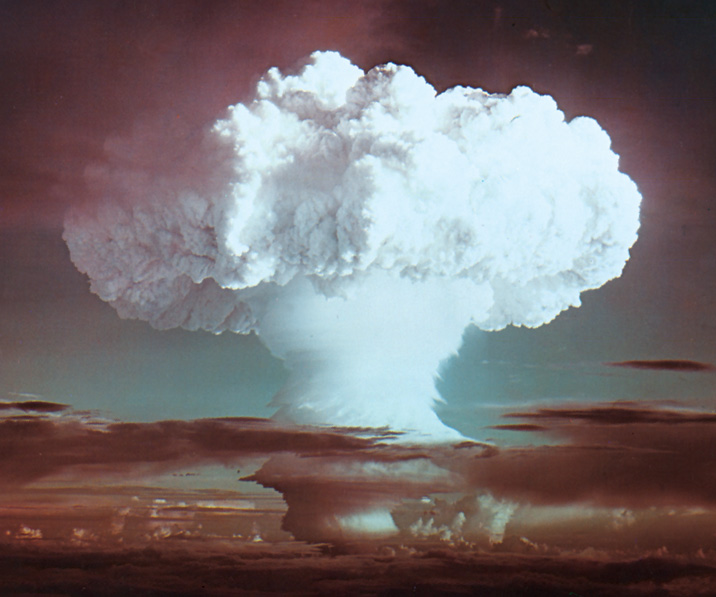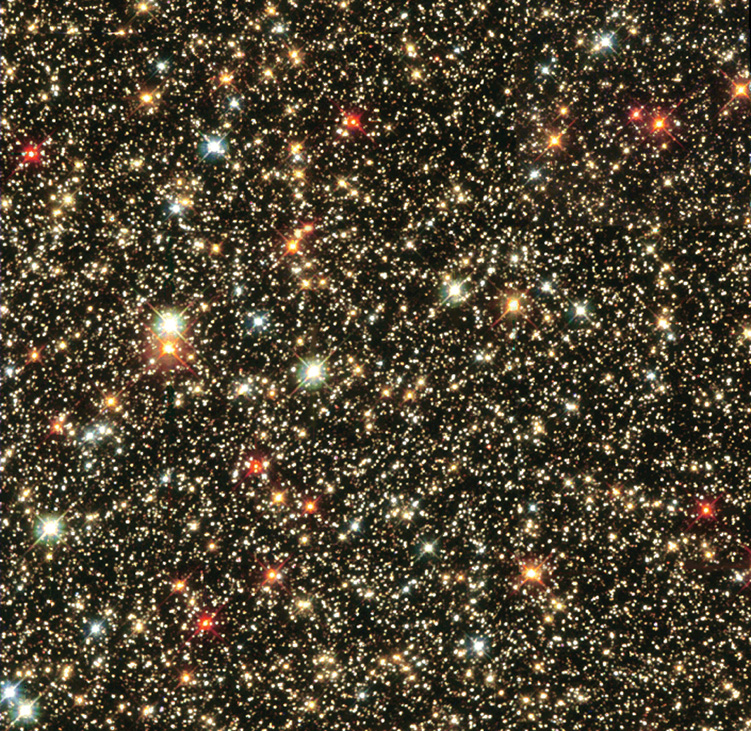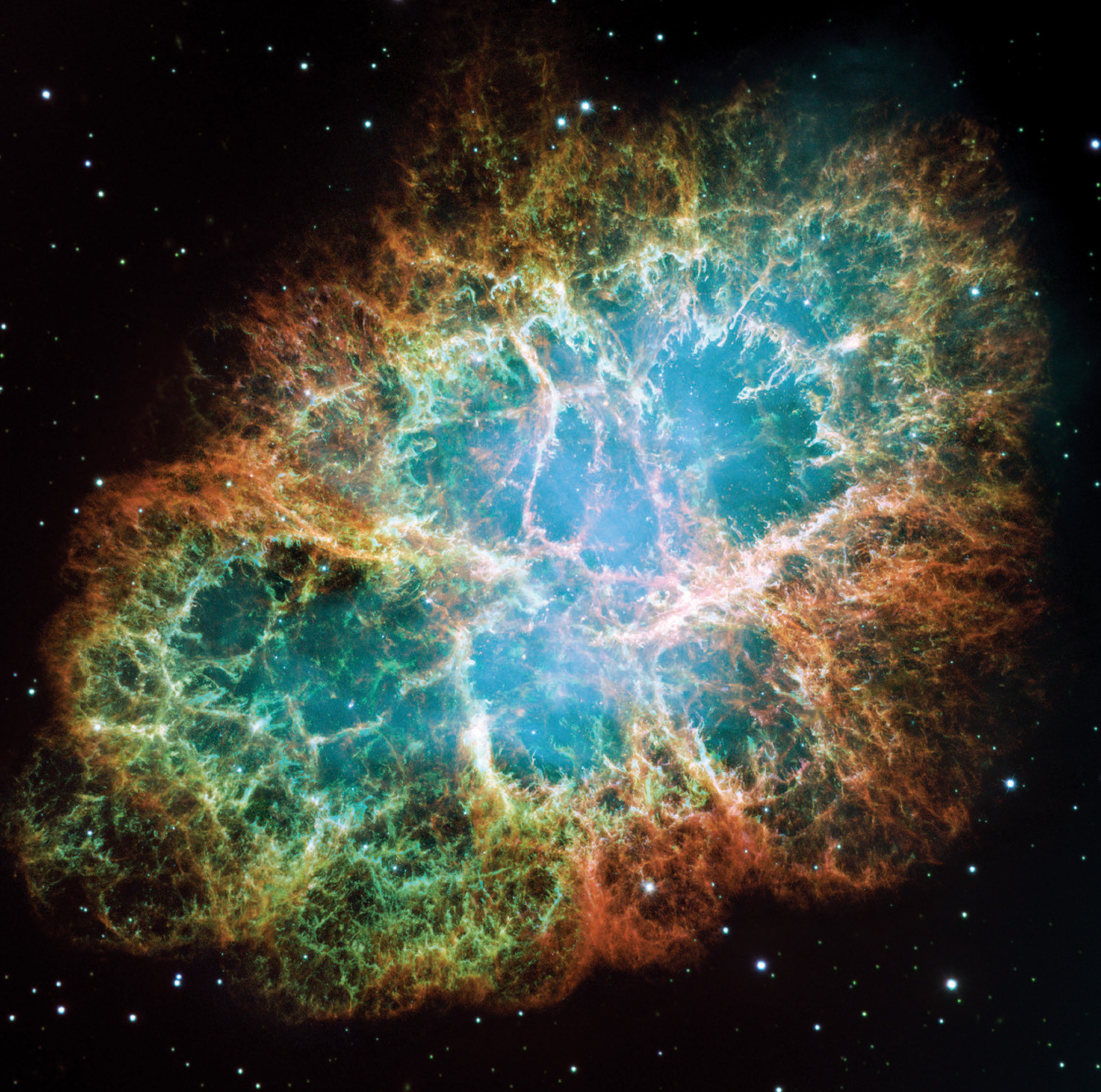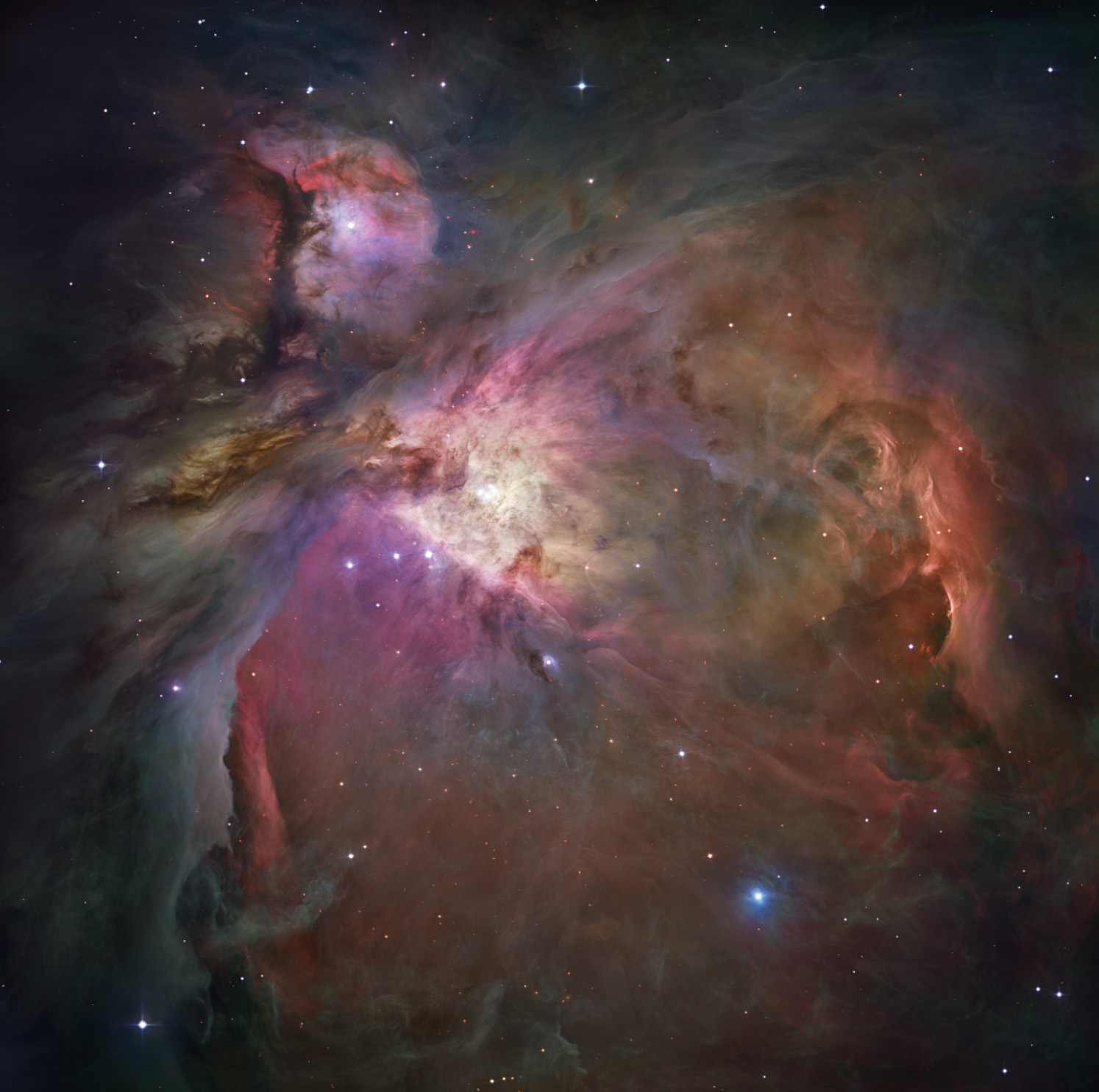1-3 By studying stars and nebulae, astronomers discover how stars are born, grow old, and die
The nearest of all stars to Earth is the Sun. Although humans have used the Sun’s warmth since the dawn of our species, it was only in the 1920s and 1930s that physicists figured out how the Sun shines. At the center of the Sun, thermonuclear reactions—so called because they require extremely high temperatures—convert hydrogen (the Sun’s primary constituent) into helium. This violent process releases a vast amount of energy, which eventually makes its way to the Sun’s surface and escapes as light (see Figure 1-1). Thus, through nuclear reactions, hydrogen acts as a “fuel” for stars. All the stars you can see in the nighttime sky also shine by nuclear reactions (Figure 1-5). By 1950 physicists could reproduce such nuclear reactions here on Earth in the form of a hydrogen bomb (Figure 1-6). In the future, converting hydrogen into helium might someday offer a cleaner method for the production of nuclear energy.

A Thermonuclear Explosion A hydrogen bomb uses the same physical principle as the thermonuclear reactions at the Sun’s center: the conversion of matter into energy by nuclear reactions. This thermonuclear detonation on October 31, 1952, had an energy output equivalent to 10.4 million tons of TNT (almost 1000 times greater than the nuclear bomb detonated over Hiroshima in World War II). This is a mere ten-billionth of the amount of energy released by the Sun in one second.

Stars like Grains of Sand This Hubble Space Telescope image shows thousands of stars in the constellation Sagittarius. Each star shines because of thermonuclear reactions that release energy in its interior. Different colors indicate stars with different surface temperatures: stars with the hottest surfaces appear blue, while those with the coolest surfaces appear red.
Because nuclear reactions consume the original material of which stars are made, the way an engine consumes its fuel, stars cannot last forever. Rather, they must form, evolve, and eventually die.
CAUTION!
Astronomers often use biological terms such as “birth” and “death” to describe stages in the evolution of inanimate objects like stars. Keep in mind that such terms are used only as analogies, which help us visualize these stages. They are not to be taken literally!
The Life Stories of Stars
The rate at which stars emit energy in the form of light tells us how rapidly they are consuming their nuclear “fuel” (hydrogen), and hence how long they can continue to shine before reaching the end of their life spans. More massive stars have more hydrogen, and thus, more nuclear “fuel,” but consume it at such a prodigious rate that they live out their lives in just a few million years. Less massive stars have less material to consume, but their nuclear reactions proceed so slowly that their life spans are measured in billions of years. (Our own star, the Sun, is in early middle age: It is 4.56 billion years old, with a lifetime of 12.5 billion years.)
While no astronomer can watch a single star go through all of its life stages, we have been able to piece together the life stories of stars by observing many different stars at different points in their life cycles. Important pieces of the puzzle have been discovered by studying huge clouds of interstellar gas, called nebulae (singular nebula), which are found scattered across the sky. Within some nebulae, such as the Orion Nebula shown in Figure 1-7, stars are born from the material of the nebula itself. Other nebulae reveal what happens when nuclear reactions stop and a star dies. Some stars that are far more massive than the Sun end their lives with a spectacular detonation called a supernova (plural supernovae) that blows the star apart. The Crab Nebula (Figure 1-8) is a striking example of a remnant left behind by a supernova.

The Crab Nebula—Wreckage of an Exploded Star When a dying star exploded in a supernova, it left behind this elegant funeral shroud of glowing gases blasted violently into space. A thousand years after the explosion these gases are still moving outward at about 1800 kilometers per second (roughly 4 million miles per hour). The Crab Nebula is 6500 light-years from Earth and about 13 light-years across.

The Orion Nebula—Birthplace of Stars This beautiful nebula is a stellar “nursery” where stars are formed out of the nebula’s gas. Intense ultraviolet light from newborn stars excites the surrounding gas and causes it to glow. Many of the stars embedded in this nebula are less than a million years old, a brief interval in the lifetime of a typical star. The Orion Nebula is some 1500 light-years from Earth and is about 30 light-years across.
Studying the life cycles of stars is crucial for understanding our own origins
Dying stars can produce some of the strangest objects in the sky. Some dead stars become pulsars, which spin rapidly at rates of tens or hundreds of rotations per second. And some stars end their lives as almost inconceivably dense objects called black holes, whose gravity is so powerful that nothing—not even light—can escape. Even though a black hole itself emits essentially no radiation, a number of black holes have been discovered beyond our solar system by Earth-orbiting telescopes. This is done by detecting the X-rays emitted by gas falling toward a black hole.
During their death throes, stars return the gas of which they are made to interstellar space. (Figure 1-8 shows these expelled gases expanding away from the site of a supernova explosion.) This gas contains heavy elements—that is, elements heavier than hydrogen and helium—that were created during the star’s lifetime by nuclear reactions in its interior. Interstellar space thus becomes enriched with newly manufactured atoms and molecules. The Sun and its planets were formed from interstellar material that was enriched in this way. This means that the atoms of iron and nickel that make up Earth, as well as the carbon in our bodies and the oxygen we breathe, were created deep inside ancient stars. By studying stars and their evolution, we are really studying our own origins.
CONCEPT CHECK 1-2
If a star were twice as massive as our Sun, would it shine for a longer or shorter span of time? Why?
Shorter lifetime. The larger star has twice as much mass as the Sun. However, it consumes its nuclear fuel much more than twice as fast, so that its lifetime is shorter than the Sun.